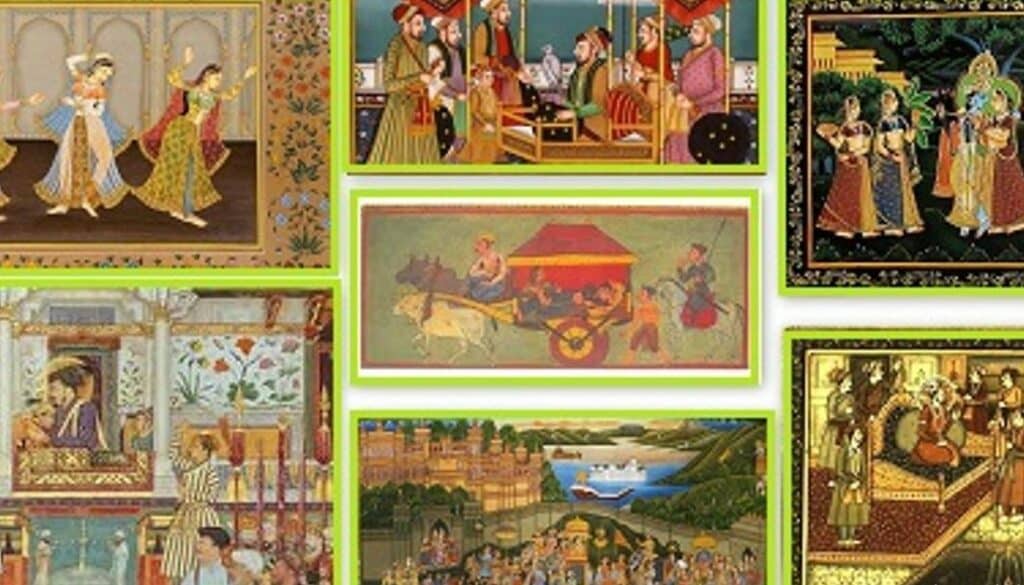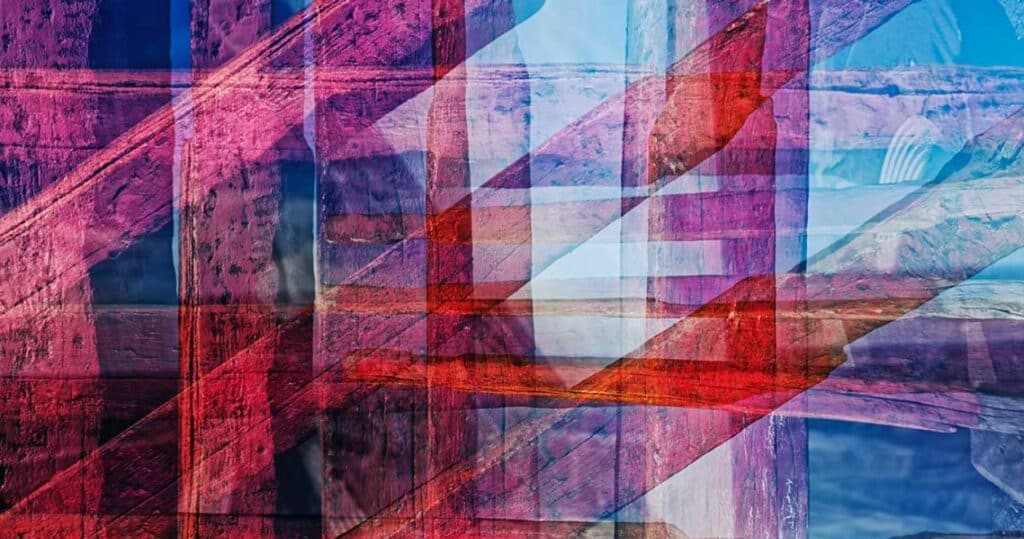Miniature works have a special place in the hearts of art lovers. The minute details and careful accuracy shown in these tiny works of art always manage to amaze. The most famous miniature paintings are admired for being able to tell big stories in small spaces, which makes them masterpieces of art. It’s interesting to me how Most Famous Miniature Paintings can show us times in history, cultural customs, and personal stories.
Every brush stroke tells a story and takes you to a different place and time. The world of miniature painting is very different and beautiful. It includes delicate figurines from the Mughal era and beautiful works from the Renaissance in Europe. There are a lot of different types of themes in Most Famous Miniature Paintings. There are religious and mythological scenes, pictures of royalty, and scenes from everyday life.
The artists who made these treasures are very skilled and creative, and they bring life to their small paintings. When you look more closely at the world of Most Famous Miniature Paintings, you’ll see a complex web of creative art and cultural history. Each masterpiece gives you a glimpse into a small world of wonder, whether you’re amazed by the accuracy of Persian miniatures or the bright colours of Indian Pahari art.
Read More: 10 Most Famous Van Gogh Paintings
What are the Miniature Paintings?
Paintings that are miniature are less than 12 inches across. They can be made from metal, paper, vellum, ivory, and other things. To make a miniature drawing, you need to be very skilled and pay attention to every little detail.People make miniature paintings, which are works that are very small but have a lot of detail.
These designs can be made on a lot of different materials, like metal, paper, papyrus, wood, and ivory. There is a long history behind miniature art that goes back to Mesopotamia and ancient Egypt. People have used them to paint portraits, add pictures to papers, and decorate books and other things.
There are a lot of interesting and different kinds of art that are part of the field of miniature art. The best artists in this field show off their skills by making small pieces with lots of little features. People all over the world are still amazed by the following works of tiny art:
Techniques Used in Miniature Painting
Miniature painting requires precision and attention to detail. Artists use various methods to achieve the detail and skill they want in their tiny masterpieces. Here are some essential miniature painting techniques:
- Underpainting: Underpainting is the process of giving the miniature a base coat of paint. This helps make the surface even and smooth for the next layers of paint.
- Shading: Shading is the process of making shadows and depth with darker colors. You can use washes, drybrushing, or blending to do this.
- Highlighting: Highlighting is the process of using lighter colors to bring out the details of a miniature by making highlights. You can use drybrushing or blending to do this.
- Layering: Layering is the process of putting on several layers of paint to build up the color and give the painting depth. This can be done with paints that are either opaque or see-through.
- Glazing: Glazing is the process of painting over other layers of paint with a thin layer of clear paint. This helps the colors go together and make a smooth finish.
Top 10 Most Famous Miniature Paintings in the World
Miniature paintings have left an indelible mark on the art world over the years, despite their small size. These tiny works of art show a lot of skill, attention to detail, and creative thinking. Here are the top 10 most famous miniature paintings from all over the world:
The Wilton Diptych

Key Points:
- English royal portrait.
- Commissioned by King Richard II.
- Richard II depicted kneeling before the Virgin and Child.
A renowned mediaeval English miniature painting is the Wilton Diptych, made around 1395-1399. King Richard II of England commissioned it as a portable altarpiece with two hinged diptych panels with elaborate scenes on both sides.
Angels surround Richard II as he kneels before Mary and Jesus on the front panel. The reverse shows Edmund, Edward the Confessor, and John the Baptist, Richard’s patron saints. The Wilton Diptych, famous for its delicate elegance and vivid colours, shows late mediaeval England’s artistic brilliance.
The Limbourg Brothers’ Très Riches Heures

Key Points:
- 15th-century illuminated manuscript.
- Depicts scenes from the seasons.
- Exceptional detail and color.
The Limbourg Brothers’ early 15th-century manuscript Très Riches Heures du Duc de Berry is famous. Since Jean, Duc de Berry commissioned it, its exquisite illuminations and brilliant miniature paintings are famous. Each month is depicted with scenes from daily life, nature, and the zodiac.
One of its most famous miniatures is “Les Très Riches Heures,” depicting the Duke and his court, and “Le Château de Lusignan,” a magical palace. A masterpiece of mediaeval manuscript decoration, the Très Riches Heures is unfinished but admired for its detail and artistry.
The Peacock Miniature

Key Points:
- Mughal miniature painting.
- Vivid depiction of a peacock.
- Rich colors and intricate details.
The Peacock Miniature is a stunning Mughal miniature painting with precise detailing and brilliant colours. The 16th- and 17th-century Mughal Empire artwork displays a majestic peacock surrounded by rich flora, symbolising beauty and grace.
Emperors and nobility commissioned beautiful miniature paintings of this era to show their wealth and power. The Peacock Miniature shows Mughal painters’ meticulous rendering of each feather and leaf. Its appeal rests in its capacity to depict nature on a small, attractive canvas, preserving Mughal art.
The Lady with an Ermine

Key Points:
- Leonardo da Vinci masterpiece.
- Portrait of Cecilia Gallerani.
- Displays da Vinci’s mastery of light and shadow.
Leonardo da Vinci’s 1490 miniature “The Lady with an Ermine” is famous. It shows Cecilia Gallerani, mistress of Milan Duke Ludovico Sforza, grasping an ermine, symbolising purity and royalty. Da Vinci’s small-scale painting of subtle expressions and meticulous details is stunning.
Renaissance elegance and grace are reflected in the subject’s mysterious look and the ermine’s delicate posture. “The Lady with an Ermine” is one of da Vinci’s most compelling portraits, demonstrating his creative approach to portraiture and his ability to evoke depth and emotion.
The Armada Portrait

Key Points:
- Depicts Queen Elizabeth I.
- Commemorates the English victory over the Spanish Armada.
- Symbolizes England’s naval power and the Queen’s strength.
Famous Elizabethan miniature painting The Armada Portrait was produced around 1590. To commemorate the English victory against the Spanish Armada in 1588, it represents Queen Elizabeth I in a forceful and magnificent attitude, symbolising her dominion.
The globe, pearls, and ships symbolise England’s naval power and worldwide ambitions in the painting. Its complex decorations and brilliant colours showcase Elizabethan creativity and political propaganda. George Gower or Nicholas Hilliard may have sculpted it. It represents English national pride and history today.
The Young Woman with a Unicorn

Key Points:
- Renaissance portrait.
- Depicts a young woman holding a unicorn.
- Symbolism of purity and innocence.
Raphael’s late 15th-century miniature “The Young Woman with a Unicorn” is famous. A Renaissance-dressed girl holds a unicorn in her lap in this 29.5 x 20.3 cm piece. Mediaeval and Renaissance art include unicorns, symbolising purity and chastity.
This stunning miniature painting has delicate brushwork and complex detailing. It remains enigmatical, allowing allegorical symbolism and courtly love interpretations in the Musée Conde, France.
The Akbarnama

Key Points:
- Mughal manuscript commissioned by Emperor Akbar.
- Chronicles his reign and conquests.
- Fusion of Persian and Indian artistic styles.
Akbar, the third Mughal emperor of India, commissioned the Akbarnama in the 16th century to depict his rule. Persian and Indian influences merge in this miniature painting masterpiece. The court historian Abu’l-Fazl oversaw its depiction of Akbar’s military victories, court settings, and courtier portraits.
Mughal artisans’ brilliant colours, complex detailing, and delicate brushwork are impressive. The Akbarnama is a historical document and a tribute to Mughal India’s cultural and artistic riches.
The Chaurapanchasika

Key Points:
- Illustrated Sanskrit love poem.
- Depicts romantic encounters.
- Rich in symbolism and poetic imagery.
The 17th-century Mewar Rajput school created the Chaurapanchasika, a famous Indian miniature. Rana Jagat Singh of Mewar commissioned it to illustrate Bilhana’s Kashmiri love lyrics. This masterwork depicts courtly love and passionate meetings with wonderful details and brilliant colours.
Delicate brushwork, elaborate patterns, and powerful emotions make the Chaurapanchasika famous. It represents the Mewar school’s artistic skill and culture. This small artwork in museums and private collections captivates spectators with its ageless beauty and poetic tale.
The Shah Jahan Album

Key Points:
- Collection of Mughal miniature paintings.
- Commissioned by Emperor Shah Jahan.
- Features portraits, landscapes, and calligraphy.
Shah Jahan commissioned the Shah Jahan Album, a famous miniature painting collection, in the 17th century. Master Mughal court artists’ precise details, brilliant colours, and perfect blend of Persian and Indian artistic influences are on display in this magnificent CD.
Portraits, court situations, landscapes, and flora and animals are depicted. Beautiful and historically significant, these miniatures reveal the Mughal Empire’s luxurious culture and Shah Jahan’s patronage of the arts, notable for the Taj Mahal.
Portrait of a Young Woman

Key Points:
- Renaissance portrait attributed to Raphael.
- Known for its delicate features and soft colors.
- Thought to be a portrait of Beatrice Cenci.
The tiny painting “Portrait of a Young Woman” is famous for its delicate brushwork and detail. Renaissance-era art depicts the subject’s elegance and beauty with precision. This masterwork by Hans Holbein the Younger or Nicholas Hilliard displays the period’s interest in portraiture and the human form.
Elegant and subtly drawn, the young woman is graceful. Nobility valued miniature paintings like this for their closeness and complexity as status emblems or tokens of devotion. This work still shows how small art captures beauty and grace.
Verdict
Because they are so small but have so much detail, miniature paintings continue to intrigue art fans all over the world. These small pieces of art show how skilled the artists who made them were, whether they were depicting the grandeur of Mughal emperors, the elegance of European nobles, or the subtlety of nature.
The most famous miniature drawings we’ve talked about here are just a small part of the huge world of miniature art. There are no limits to your creativity, and each brushstroke is its own work of art. Next time you see a miniature painting, take a close look. You might find a world of beauty hidden in a small area.





